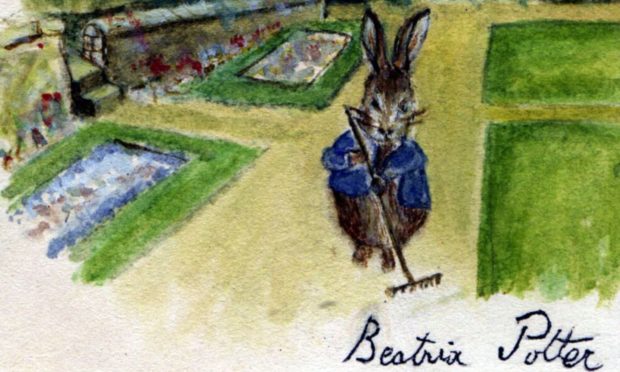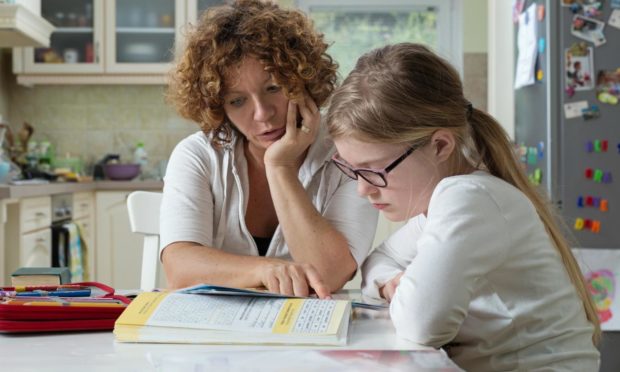In happier times lovers of Robert Burns would now be looking forward to the annual celebration of the great man’s poetry as well as reverential reflections on his unrivalled contribution to Scotland’s literary culture.
Normally, innumerable “Immortal Memories” would be extolling the Bard’s reputation as the ultimate Lad O’ Pairts and, among his many other qualities and failings, his lifelong love of learning.
This year will be different, of course, and as we head for a season of virtual Burns Suppers one can’t help wondering whether the poet’s love of learning would have been quite as profound had his schooling been done from home, over zoom and in the middle of a global pandemic.
Had he been forced to learn virtually, I suspect he would have found the experience “nought but grief and pain” – words he once used in a slightly different context.
Certainly, in this writer’s home, remote schooling has been a paroxysm of tears, tantrums and meltdowns, and that’s just the parents – never mind the five-year-old whose questionable attitude towards the basics of numeracy and literacy is proving a little trying.
There is a newspaper cartoon being passed around on social media that sums it up. A rather weary-looking mother is faced with a stroppy child gazing blankly into a screen as she contemplates a chart of their “Home School Timetable”. Instead of subjects, the periods are filled in with “nag, coax, shout, pester, bribe, cajole, threat, bung, scream, sob, scold yell, cry and drink.”
This ST cartoon has accurately captured some aspects of home schooling during the lockdowns! pic.twitter.com/UGloP1U1ue
— Feng Su (@DrFengSu) January 17, 2021
Lockdown The First
During the first lockdown, I remember feeling relieved our two semi-continent cherubs were pre-school age and, therefore, we were spared the torture of home learning. Teaching, after all, is something best left to the professionals.
But friends and relations, who were struggling with hormonal adolescents, told horror stories of cancelled exams and the stresses of chivvying uncooperative youngsters to do their work.
Since then, our eldest took her first, tentative steps at primary school at the dawning of the new academic year. Now, like countless others, she is enduring home learning while her younger brother makes a nuisance of himself and her parents climb the walls. After less than a fortnight, the coaxing and cajoling is moving perilously close to sobbing and screaming.

Of course, it is not just the classroom itself that children and parents are missing. The social interaction of the playground is also much missed. Adults are no substitute for childhood friends. Role-playing Mr MacGregor when faced with insistent demands for games of “Peter Rabbit” tests the patience of this particular middle-aged parent (despite a long-held admiration for the works of Beatrix Potter).
But it is not just about one aged and mean-spirited father’s frustration at playing make-believe with his daughter or the impact that home learning has on attempts at home working.
Clearly, the most important aspect is the impact that the arrangements have on the children themselves. Given the state of the pandemic, home learning is the way to make the best of a bad lot. Nevertheless, the effect on children will be considerable.
‘It is no substitute whatsoever’
Before the second wave struck, Scotland’s Children’s Commissioner, Bruce Adamson, raised serious concerns about remote schooling.
Back in June Mr Adamson said bluntly that much of the “home learning “ carried out at that stage of the pandemic “just doesn’t work” as he warned school closures risked psychological damage to children.
“It is no substitute whatsoever for a real-life, school-based education,” Mr Adamson said “The proposals for what has been described as blended learning, unfortunately still seems to be heavily based on home learning. That’s a problem, because it is going to have a real impact on children’s right to education. So we need to do much better.”
Since then the signs are that – thanks to the dedication of teachers – home learning methods have improved as the pandemic has gone on.
Certainly, the enthusiasm, cheerfulness, professionalism and preparation of lessons demonstrated by those at the other end of the zoom call during our brief skirmish with home learning has been hugely impressive.
Nevertheless, wider concerns remain, notably that across the country the less-than-ideal arrangement will result in children from poorer backgrounds falling behind.
Concern has been expressed that some children do not have access to the laptops and broadband required to make home learning work.
For youngsters at critical points in their education, there is the prospect of more cancelled exams – disruption that is scarcely going to help students in their most formative years.
Furthermore, this week Mr Adamson issued another warning, arguing that “those already at risk are suffering most: disabled and care-experienced children and young carers”.
The Children’s Commissioner went on: “More children are now living in poverty, suffering poor mental health and dealing with bereavements.”
A warning like that puts my pitiful moans about domestic disharmony into perspective. With the arrangement continuing well into next month, it is clear that in the post-pandemic era effective action will be required to minimise the damage to children from this necessary but unsatisfactory product of the coronavirus crisis.
Home learning is perhaps not best described as a “best laid scheme”, but there is a danger of it going “aft agley”.











